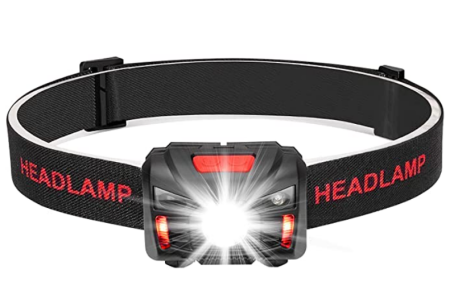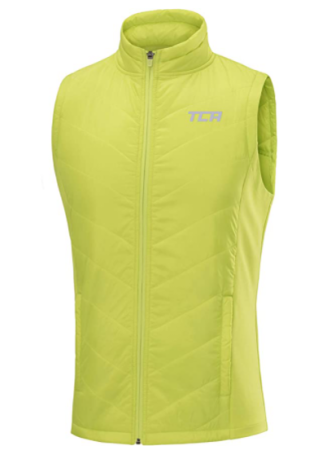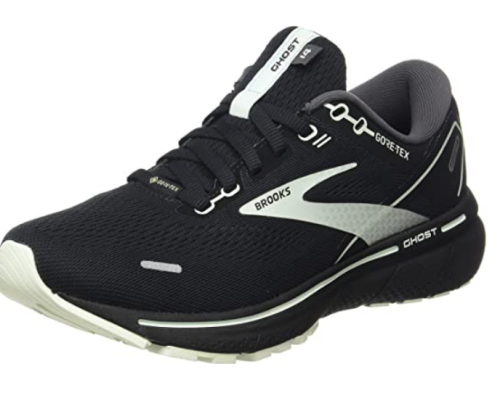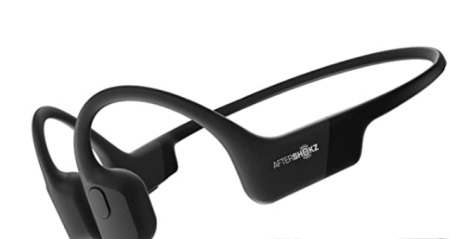Winter Night Runs
January 31, 2022Disclaimer: As before, with these kinds of blog posts, when I recommend certain products, it's because I honestly think they are great not because I get something back. I'm not affiliated in any way with the companies that make these products and I didn't even include promotional links to these products. They just work really well for me, which is why I recommend them. Your mileage (*) may vary.
(*) I'm actually proud of this pun in a blog post about running.
Last year, I became more concerned with my health and fitness again and started running on a regular schedule. Now I try my best to keep in shape and not lose this progress, which means I have to keep up running during winter, which is something I did not care for at all in the past.
Running in winter often means running in the dark as well since I usually run after work when it's, well, dark.
Both winter (snow and ice) and darkness add additional challenges to your runs which need to be met with the right equipment. Here's what works for me and what I recommend.
My Equipment
Headlamp
This thing is literally your life insurance, so get a good one! I tried different models and ended up using this with which I am really happy.
The different models I tried varied quite a lot in brightness but the model above really illuminates my trails the way it should be. Car drivers have even flashed their high beams when driving towards me because they felt blinded by this headlamp. That's the level of brightness you are looking for! A good check is also standing in front of a mirror with the lamp on. Are you blinded? Your eyes hurt? Good! You have the right lamp.
As I said, this is lamp is your life insurance. It's all about visibility and vision. Without it, you are literally invisible to traffic. So if might encounter traffic on your run, never go without those! Even when there are street lights ... you are still are nearly invisible to car drivers, always keep that in mind.
Headlamps are also great for spotting black ice or icy patches. I constantly "scan" the ground in front of me with the beam of this lamp. Glare usually means trouble.
Body Warmer
I really like this body warmer vest. It has great insulation and due to its bright color and reflective stripes, it again increases your visibility.
For me, this is just the extra layer I need. After the first few minutes, I usually don't mind the cold anyway but this vest adds the necessary extra protection from winds and snow.
Winter Running Shoes
I intentionally put those in third place because I wanted to stress the importance of safety first. But of course, you should have great shoes that are specially made for this weather and conditions.
I went for Brooks Ghost 14 GTX and honestly, these shoes are a marvel of engineering! Admittedly, I never owned dedicated winter running shoes before, so I don't have much of a comparison, but I am truly in love with these and have put more than 200 km on those bad boys already since last December.
Their insulation and waterproofness is simply a joy. I can run through ankle-deep snow and puddles and return home with (mostly) dry feet. That's really something.
Also, their grip is phenomenal! I honestly have better traction on ice and snow with these running shoes than with e.g. my Timberland boots that I wear for walking around. I haven't slipped once with those (yet 🤞).
That being said, use your senses (and brain) when running on snow and ice. Over time, you will develop a feeling and intuition for the ground and you'll know when you are mostly safe from slipping.
- Fresh snow usually provides a good grip. Of course, invisible ice patches beneath fresh snow are quite the danger. Go easy first and test out the terrain, especially downhill.
- Gravel on ice works well too. A few kernels of gravel effectively "disarm" (black) ice patches. Pay attention to the feel through the shoe soles and the sound the gravel makes.
- "Crunchy ice" is mostly fine as well. Again, use your hearing and develop a feeling for that kind of ice that is safe to run on.
- Everything else and/or when unsure: slow down or stop. Swallow your pride. I notice differences in my pace up to 30 seconds/kilometer due to different snow and weather conditions. Sometimes you just can't go as fast as you would like. Beats slipping and injury, though.
Bone Conduction Headphones
I have blogged about bone conduction headphones before and before and I'm still excited about this technology.
I always listen to podcasts when going on a run and both being able to do that and being able to hear traffic around me is priceless. It's another huge factor when it comes to safety. Remember what I wrote about using your senses above. Being able to hear helps ;-).
I believe Aftershokz are the gold standard when it comes to consumer-grade bone conduction technology. I am using their products for more than 10 years now and only recently upgraded to the Aeropex model. It provides fantastic audio quality and more than 10 hours of battery life that does not degrade over years. That's usually more than 10 runs for me before I have to think about charging them again.
Apple Watch
I blogged about the Apple Watch being the perfect sports tracker recently and I still stand by that.
I even upgraded to a cellular model in the meantime and couldn't be happier. Again, the safety aspect of being able to make (also receive) emergency calls is a great improvement.
Interested?
If reading this caused you to entertain the idea of winter running, let me know. Also, if you already have experience yourself, or have tips you like to share - don't hold back.



